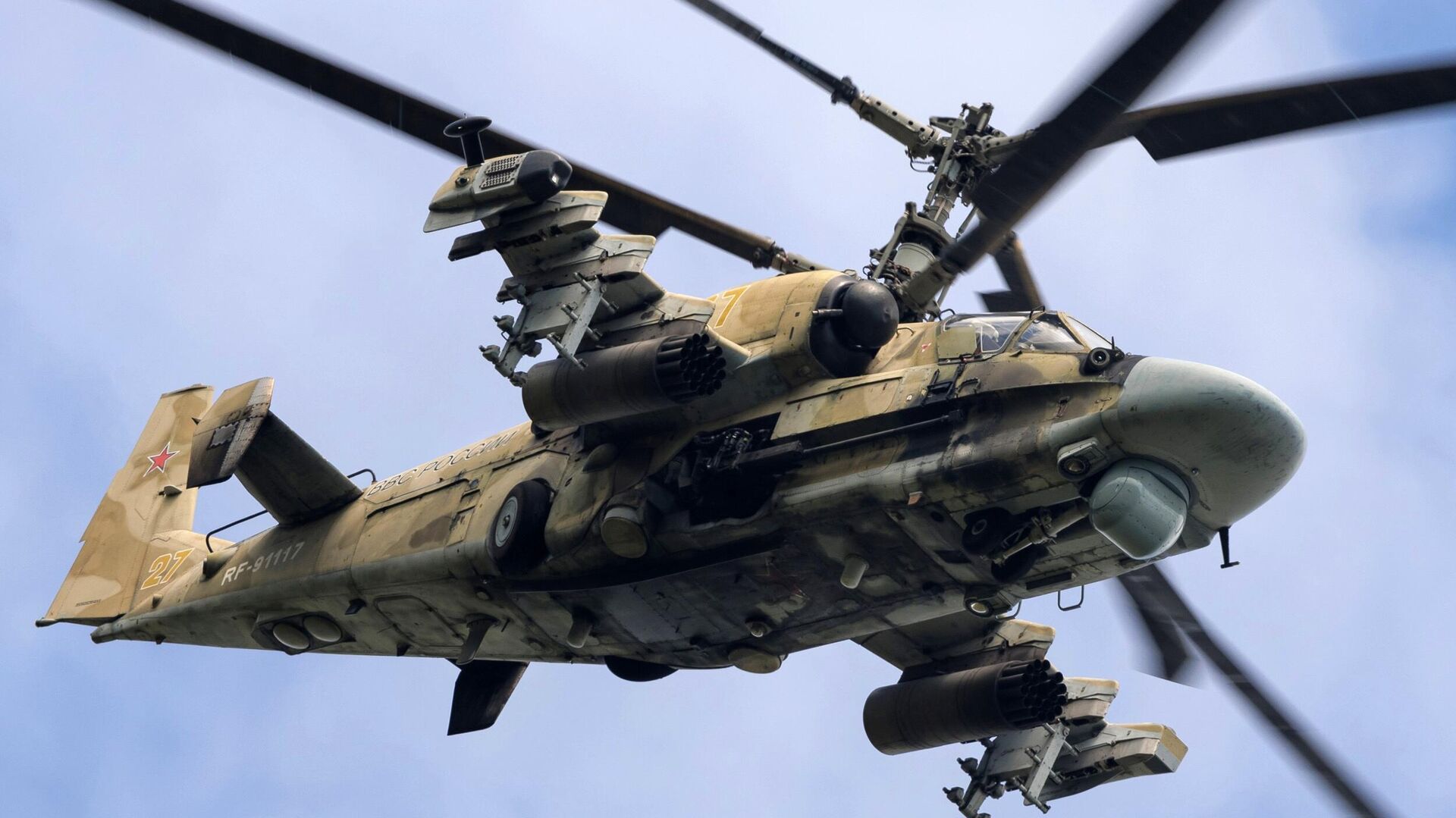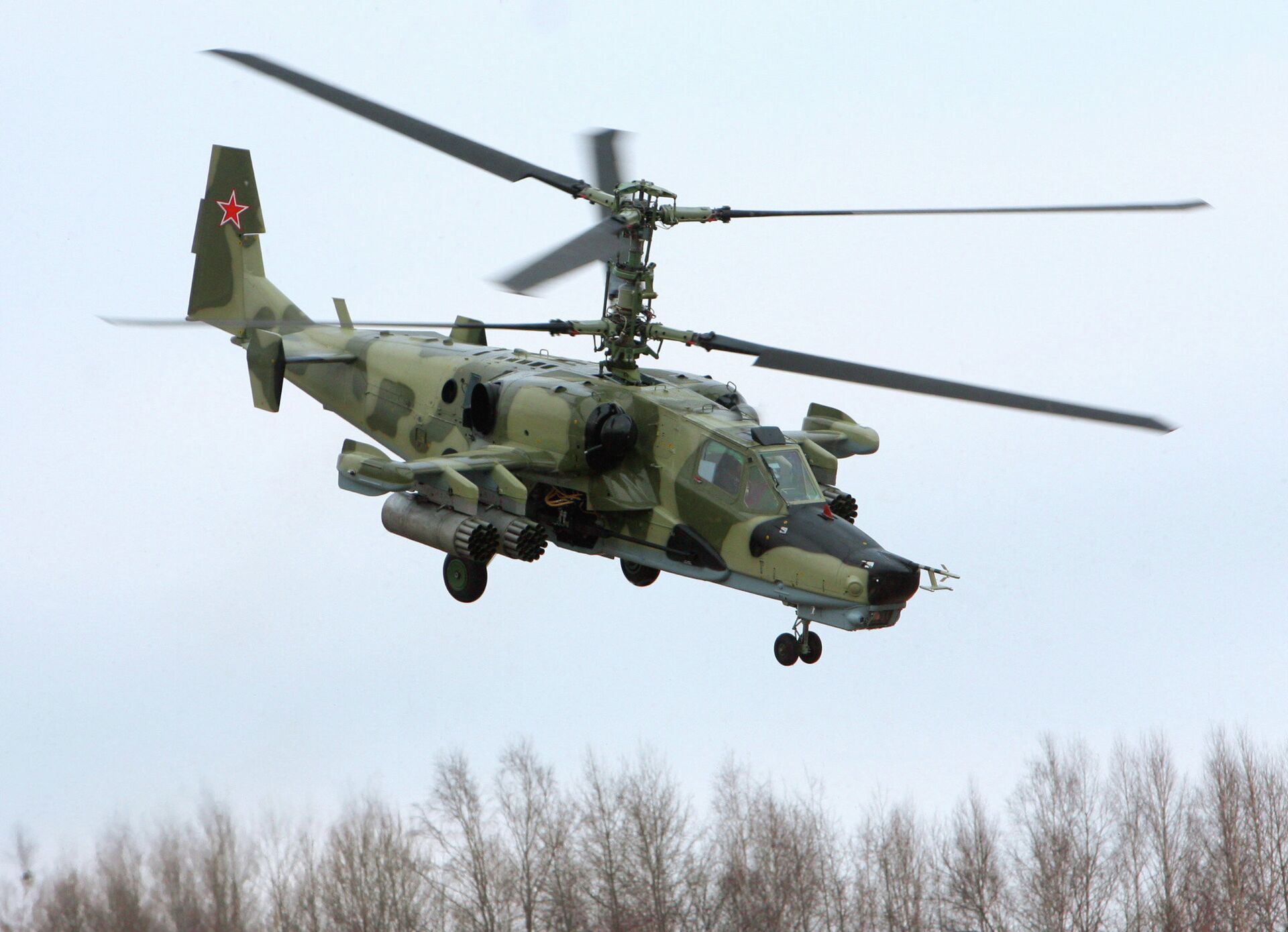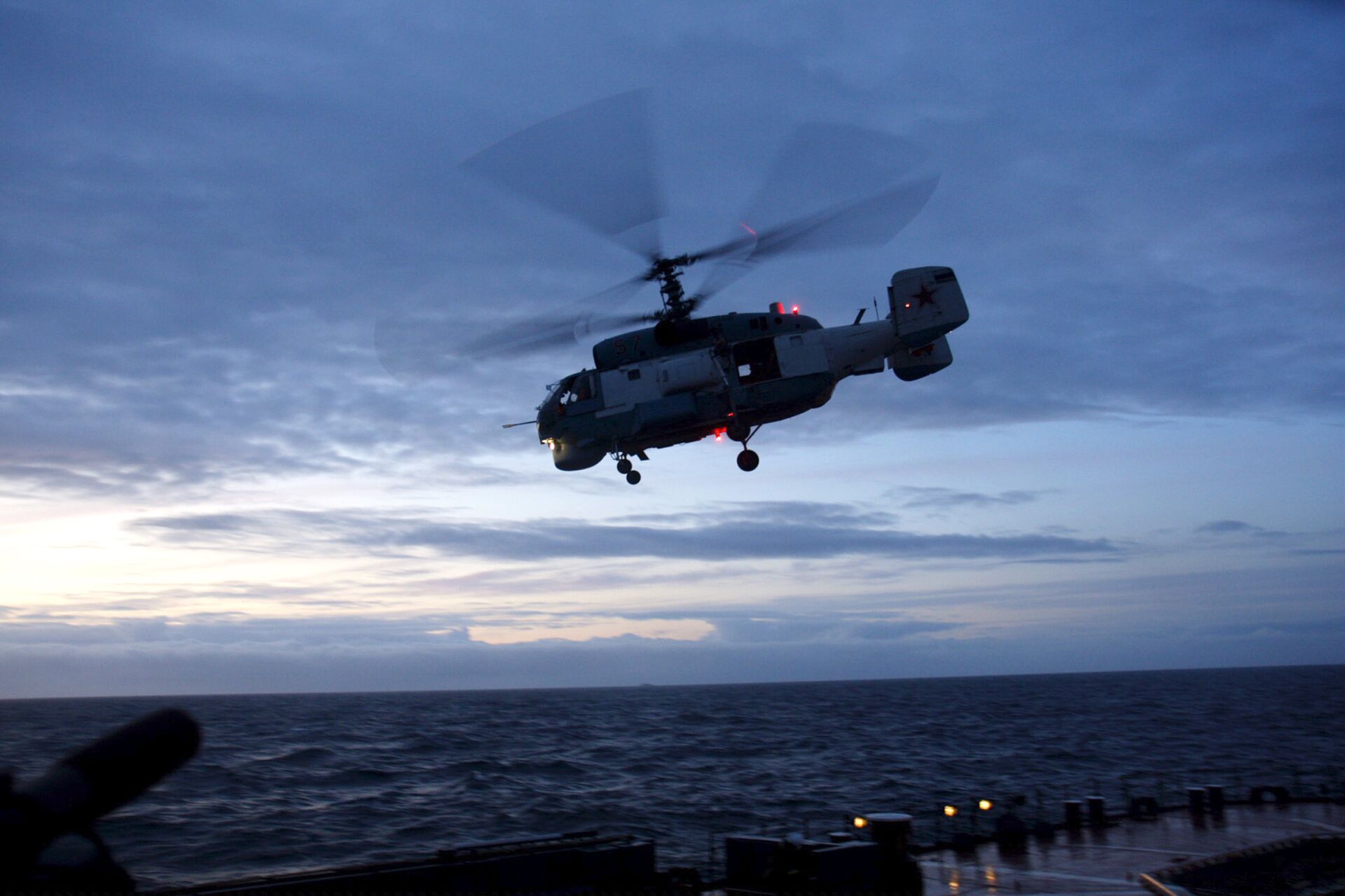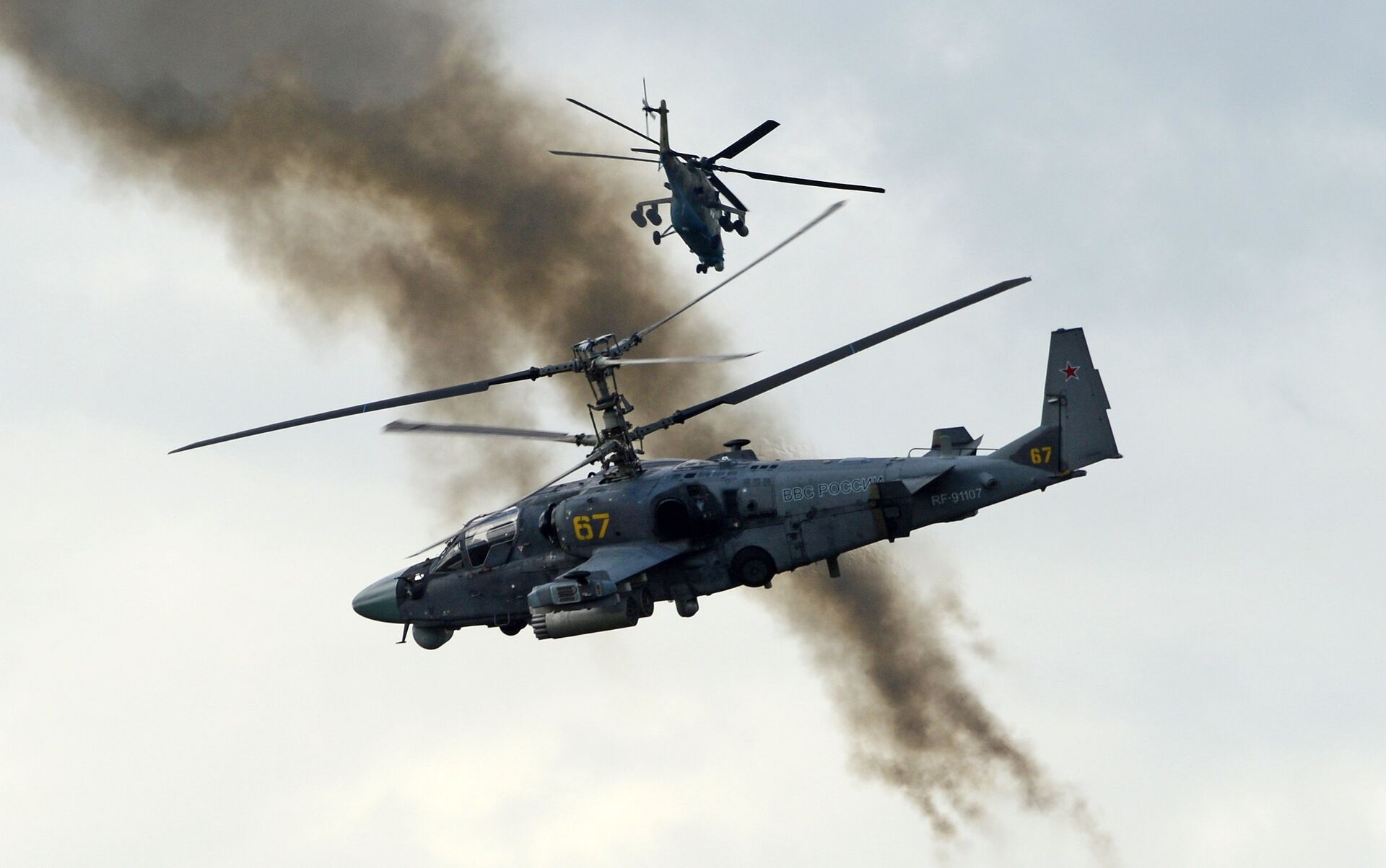https://sputnikglobe.com/20231007/coaxial-ingenuity-what-makes-kamov-helicopters-so-special-1114007304.html
Coaxial Ingenuity: What Makes Kamov Helicopters So Special?
Coaxial Ingenuity: What Makes Kamov Helicopters So Special?
Sputnik International
Seventy five years ago in 1948, the Soviet government formally established an organization that would proceed to create probably some of the most efficient military helicopters in the world – the Kamov Design Bureau, initially known simply as OKB Number 2.
2023-10-07T19:17+0000
2023-10-07T19:17+0000
2023-10-07T19:17+0000
russia
russia
kamov
ka-27
ka-50
ka-52
https://cdn1.img.sputnikglobe.com/img/07e6/09/06/1100444406_0:131:2501:1537_1920x0_80_0_0_1d678ad8c42cd531aef98e3ff2593729.jpg
Named after its head, Soviet aerospace engineer Nikolai Kamov, the Kamov Design Bureau originally focused its efforts on developing and manufacturing helicopters for the Russian navy.Throughout its illustrious history, Kamov Design Bureau produced a wide assortment of military and civilian helicopters sporting Kamov’s trademark feature – coaxial rotors.In 1949, Kamov and his colleagues rolled out Ka-10, a single-seat observation helicopter, though only a handful of this type of craft was produced.In 1952, the twin-seat Kamov Ka-15 helicopter, which would become the first mass produced coaxial rotor helicopter, performs its maiden flight. Originally designed for anti-submarine operations, the relatively small Ka-15 ended up being used primarily for civilian purposes: in agriculture and fishery control.In the early 1960s, however, Kamov delivered Ka-25, a bona fide anti-submarine warfare helicopter powerful enough to carry detection equipment needed to ferret out enemy submersibles and sturdy enough to operate in arctic conditions.The Kamov design bureau would then proceed to develop several other helicopters, such as: Ka-27, another anti-submarine warfare helicopter, which was adopted by the Russian navy in the 1980s, long after Kamov’s death in 1973; Ka-25K, a civilian flying crane helicopter; and Ka-26, a light utility helicopter.Also in the 1980s, Kamov produced the Ka-50 Black Shark single-seat attack helicopter which, aside from its impressive armaments and maneuverability, also featured a thing rarely seen among its kind – a rescue ejection seat for pilot.However impressive Ka-50 is, it cannot eclipse the fame of its successor, the Ka-52 Alligator attack helicopter whose maiden flight took place in 1997.Packing a serious punch and capable of taking the pain, Ka-52 first saw action during Russia’s military intervention in Syria in the late 2010s, before further cementing its reputation as a force to be reckoned with during Russia’s ongoing military operation in Ukraine.In June 2023, a damaged Ka-52 managed to make it back to base after losing its tail to ground fire from Ukrainian forces, with veteran Russian helicopter test pilot Vadim Bazykin noting that the Alligator’s endurance is equal to none.All in all, Ka-52 is a very hardy helicopter, the test pilot said, adding that a proper electronic warfare coverage from support helicopters such as Mi-28N renders the Alligator practically “invincible.”
russia
Sputnik International
feedback@sputniknews.com
+74956456601
MIA „Rossiya Segodnya“
2023
Sputnik International
feedback@sputniknews.com
+74956456601
MIA „Rossiya Segodnya“
News
en_EN
Sputnik International
feedback@sputniknews.com
+74956456601
MIA „Rossiya Segodnya“
Sputnik International
feedback@sputniknews.com
+74956456601
MIA „Rossiya Segodnya“
ka-52 alligator, kamov helicopters, russian military helicopters
ka-52 alligator, kamov helicopters, russian military helicopters
Coaxial Ingenuity: What Makes Kamov Helicopters So Special?
Seventy five years ago in 1948, the Soviet government formally established an organization that would proceed to create probably some of the most efficient military helicopters in the world – the Kamov Design Bureau, initially known simply as OKB Number 2.
Named after its head, Soviet aerospace engineer Nikolai Kamov, the Kamov Design Bureau originally focused its efforts on developing and manufacturing helicopters for the Russian navy.
Throughout its illustrious history, Kamov Design Bureau produced a wide assortment of military and civilian helicopters sporting Kamov’s trademark feature – coaxial rotors.
In 1949, Kamov and his colleagues rolled out Ka-10, a single-seat observation helicopter, though only a handful of this type of craft was produced.
In 1952, the twin-seat Kamov Ka-15 helicopter, which would become the first mass produced coaxial rotor helicopter, performs its maiden flight. Originally designed for anti-submarine operations, the relatively small Ka-15 ended up being used primarily for civilian purposes: in agriculture and fishery control.
In the early 1960s, however, Kamov delivered Ka-25, a bona fide anti-submarine warfare helicopter powerful enough to carry detection equipment needed to ferret out enemy submersibles and sturdy enough to operate in arctic conditions.
The Kamov design bureau would then proceed to develop several other helicopters, such as: Ka-27, another anti-submarine warfare helicopter, which was adopted by the Russian navy in the 1980s, long after Kamov’s death in 1973; Ka-25K, a civilian flying crane helicopter; and Ka-26, a light utility helicopter.
Also in the 1980s, Kamov produced the Ka-50 Black Shark single-seat attack helicopter which, aside from its impressive armaments and maneuverability, also featured a thing rarely seen among its kind – a rescue ejection seat for pilot.
However impressive Ka-50 is, it cannot eclipse the fame of its successor, the Ka-52 Alligator attack helicopter whose maiden flight took place in 1997.
Packing a serious punch and capable of taking the pain, Ka-52 first saw action during Russia’s military intervention in Syria in the late 2010s, before further cementing its reputation as a force to be reckoned with during Russia’s ongoing military operation in Ukraine.
In June 2023, a damaged Ka-52 managed to make it back to base after losing its tail to ground fire from Ukrainian forces, with veteran Russian helicopter test pilot Vadim Bazykin noting that the Alligator’s endurance is equal to none.
“Truth be told, this helicopter can operate even with parts of it being damaged,” Bazykin said, noting that one probably needs to score a direct hit against Ka-52 to neutralize it.
All in all, Ka-52 is a very hardy helicopter, the test pilot said, adding that a proper electronic warfare coverage from support helicopters such as Mi-28N renders the Alligator practically “invincible.”





